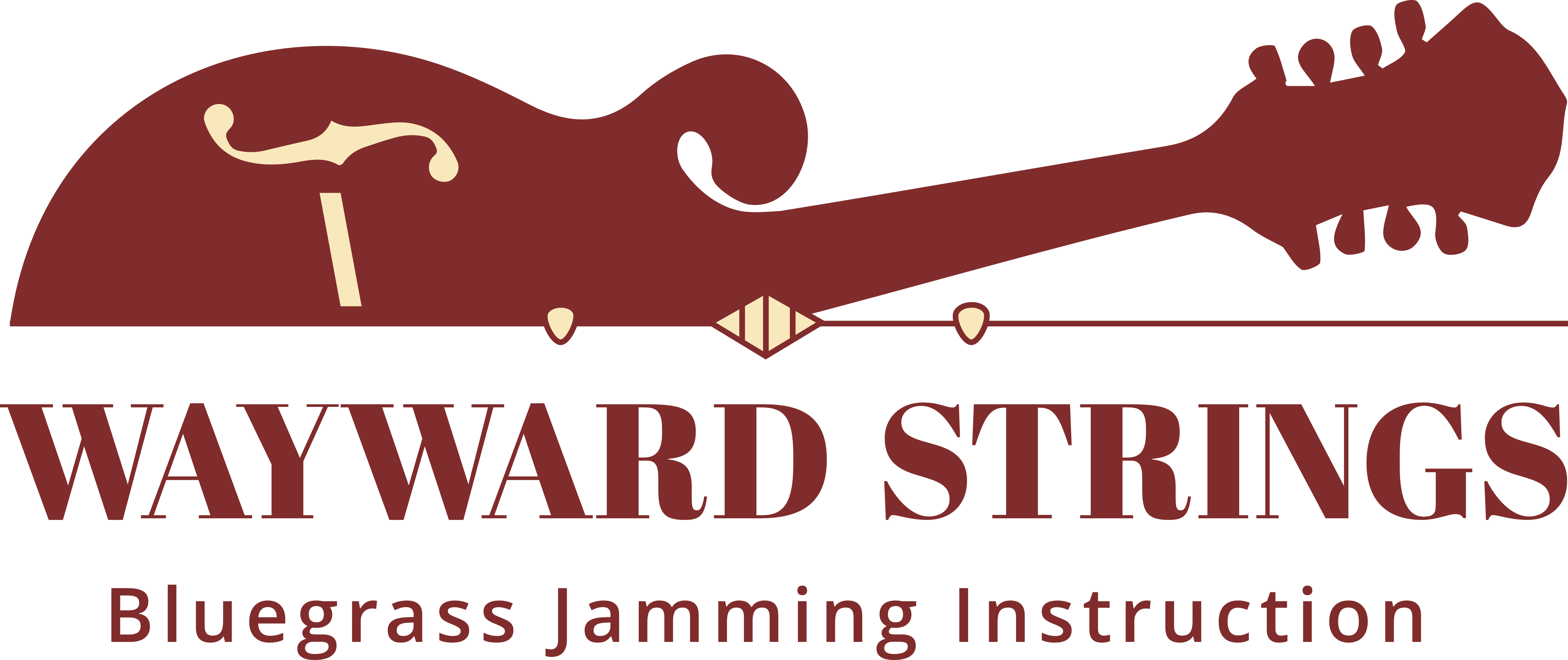What is OnSong?
- It’s a mobile app that holds all your music digitally – no more lugging around binders and books!
- It costs $30, but it’s worth every penny. [Important disclaimer: There are other similar programs, which we haven’t tried, but OnSong works so well we’re not even tempted by them!]
- It works best on an iPad; it will work on an iPhone or iPod touch, but those are typically too small to see everything on the screen.
- It allows you to transpose the song on the fly, which is a big win for banjos and guitars using capos.
- Where do the songs themselves come from? Well, unfortunately, there is no miraculous, central source where all Bluegrass songs every written magically live; you either create them yourself (which is not too hard once you get the hang of it), get them from other OnSong users who share them through OnSong.
Getting Started – The Basics
Note: Some of the changes to features in OnSong are not yet documented on the OnSong website.
- Purchase the OnSong app for your Apple device (iPad, iPhone, Mac laptop or deskop; not available Android or Windows devices, and it only works on laptops as an extension from your iOS device).
- Read and follow the Getting Started Guide. Please note that some of the documentation does not reflect recent updates to the app; however you can still probably figure most of it out, and other OnSong users will lend a hand.
- Check out these FAQs, as this will answer a lot of your questions up front.
How to Populate Your Song Library
Note: these are presented by degree of difficulty; your mileage may vary!
- Get a Song from a Bluegrass Buddy via Beaming
- Make sure you are both on the same WiFi network
- Your buddy will choose the “Share” icon, then choose Beam, then verify that your device is listed. Your buddy with then tap “Share” in the upper right.
- On your device, you will get a popup that says “Receiving Your Song Set” — choose either “Always” or “Accept” and the song will appear.
- Get a Song a Song from a Bluegrass Buddy via Cloud File Storage
- Your buddy will share a file or folder with you via DropBox or Google.
- From “All Songs” choose the “+” symbol in the lower right of the list of songs, and choose your method under the Import section.
- This requires some setup. Wayward Strings is currently using DropBox, so please see these instructions.
- Create a Song from Scratch
- Lyrics
- Conduct an internet search for the lyrics of your song.
- Paste those into the word processor of your choice; Google Doc, iPad Notes app, Microsoft Word, etc.
- Extra credit: listen to recorded versions on YouTube, Spotify, etc. to fine tune your results, find extra verses, capture the most accurate version, etc.
- Chords
- Conduct an internet search for the chords of your song.
- Insert the chords into the lyrics using bracketed chords – see this example
- Extra credit: listen to recorded versions on YouTube, Spotify, etc. to fine tune your results.
- Method 1 – Import from Google
- Create your song lyrics and chords in a Google Doc.
- Save that Doc in a folder that will be easy to find in your account; for example, create a folder called “OnSong” and put all your songs in this folder.
- On your device, create a new song by tapping the “+” symbol in the lower right list of songs, and choose “Google Drive” from the “Import” section. The very first time you do this you will have to connect your Google account.
- Navigate to your folder and select the song(s), and tap on “Import” in the upper right.
- Note: the song will be placed in whatever Book you started in when selecting the “+” symbol.
- Method 2 – Console
- Purchase and setup the Console module.
- Within Console, create your song lyrics and chords, and tap the “Save” butotn
- Method 3 – Copy / Paste
- Copy the text that has your lyrics with embedded chords; this needs to be done from your OnSong device
- On your device, create a new song by tapping the “+” symbol in the lower right list of songs, and choose Add / New Song.
- Tap the page to activate the cursor, and paste the lyrics and chords into page. Then tap “Done” in the upper right. You now have a new song.
- Lyrics
- Import a Song from Website:
- Caveats:
- This only works with the Safari web browser.
- There’s no guarantee that the lyrics and chords are correct; you are encouraged to verify and fix as needed.
- When you import the song, the formatting will almost always be off and you have to do a little (or a lot!) of cleanup. Here’s the result of importing Blue Moon of Kentucky.
- Follow these instructions to add the “Add to Safari” extension
- Find websites that have song charts.
- OnSong (mostly Christian music, FYI, not m/any Bluegrass tunes)
- Chordie (not a ton of bluegrass, but some; here’s an example)
- Classic Country Lyrics (lots of bluegrass, decent accuracy)
- Caveats:
Miscellaneous Tips, Tricks, and Gotchas
- TIP: See all the video tutorials in one place on this page.
- TIP: The knowledge base of articles and full user manual are on this page.
- TRICK: Figure out how you’d like to personalize your display (font style and size of lyrics, etc) using the Style Preferences Menu , then change all your songs to use that style with the Apply Style option (tap the three dots in the upper right).
- TIP: Use the Pitch Pipe to find your starting note(s) if you’ve got a song that kicks off with an a capella bit. Just set up a Hot Corner, and, as needed, customize with a Pitch Tag.
- TIP: Get to the full Songs list by swiping from the left (start off screen). See these other Gestures options.
- TIP: If you have to use an iPhone or iPod touch, try out Compact Mode which will help mitigate the small screen size.
- TIP: Quick edits are easy by using the Quick Chord Bar.
- TRICK: Annoyed by the four greyed out icons in the lower right of your song chart? This is called the “Live Bar” and you can turn it off in the settings. Or you might decide to give one of them a try; Autoscroll can be handy for songs with many verses!
- TIP: The Loan Shared Songs setting, when turned on, results in songs only being available to others to view; the other person won’t have the song in their library. If your intent is to fully share your song so that the other person can then permanently keep and edit the song for themselves (with no impact on your version), then make sure this is turned off.
- TIP: If you really prefer using a full keyboard to create and edit your songs, the Console feature is great, but it does require a Premium subscription. It lets you fire up a web browser window and connect to your iPad or iPhone device. You basically have both your laptop and iPad open at the same time, work on your laptop, click “Save” and see the changes on your iPad.
- TIP: Once you’ve purchase the OnSong app, you can pull it up on other Apple devices that use the same Apple ID account that was used to make the purchase. For example, you may have purchased the App from your iPad, but you can then also download the app (for free, now that you own it) on your iPhone.
- TRICK: Two jammers looking at same iPad during a jam, one with capo, the other no capo (e.g., Leslie on guitar, Susan on mandolin) – change the Chord Style to Nashville!
- RELATED GOTCHA: The gotcha is that your songs will initially be only on the device where you’ve populated them; your devices do not automatically sync your content! RELATED TIP: Even though your content is not synced, you can copy over all your content and use the second device as a backup.
- GOTCHA: OnSong, by default, uses first chord of a song to designate the key of the song. So if the first chord of your song is something other than the “1” (root) chord, that can create a mess if you use the transpose or capo features. RELATED TRICK: Every time you create a new song, be sure to set the Key to something other than “None” under Metadata.
- GOTCHA: When you email a song from OnSong, it uses whatever email account you have setup in the iOS Mail app. If you don’t regularly use the Mail app (and use instead, say, the Gmail app) then this might be confusing. RELATED TIP: If you are looking for the email itself that was sent, go to Mail and look at Sent items.
- GOTCHA: Using the “Chords Over Lyrics” format (on the back-end editor) can cause a lot of issues with spacing. RELATED TIP: We strongly recommend you always choose “Bracketed Chords” in your song editor – they will still display over the lyrics, and allow for much accurate placement.
Content Hierarchy and Organization
- Libraries
- Books
- All Songs
- Unbound Songs
- Custom
- Books
- Folders (Sets)
- All Sets (Folders)
- Custom (Folder)
- Custom (Set)
- Other Data
- Topic (tied to Keywords – Edit/Metadata/Keywords)
- Artist (as set in Metadata)
- Key (as set in a few places)
- Keywords (Edit/Metadata/Keywords)
- Icons (star, arrow, etc)

